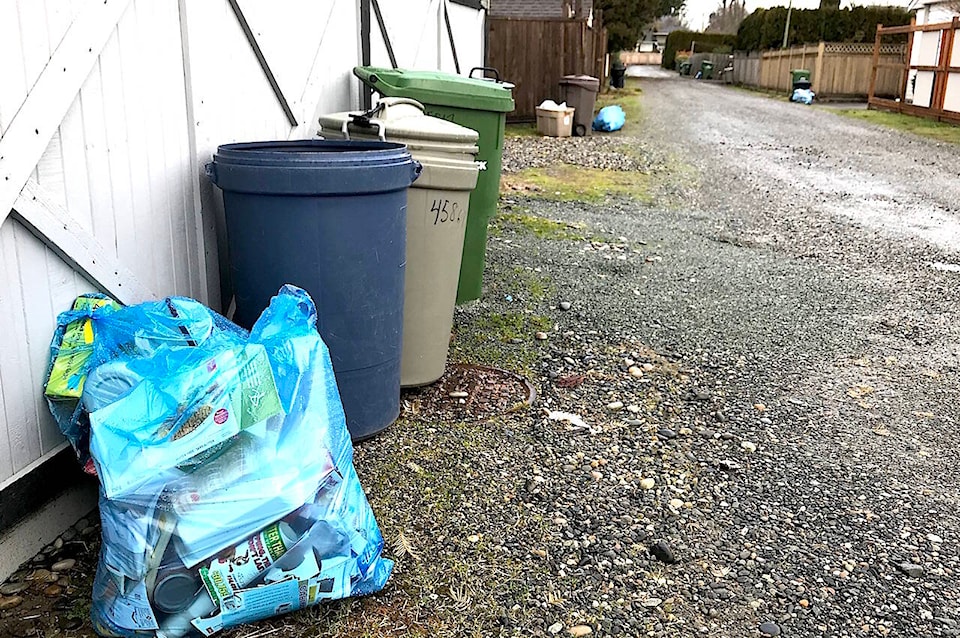More than half of what’s being tossed into residential garbage in Chilliwack does not belong there.
City of Chilliwack hired Dillon Consulting to do a “waste composition study” to analyze the garbage that residents are putting out for curbside collection, according to its first quarter reports.
The audit showed that 58 per cent of the garbage contents could be diverted from the landfill, meaning the materials are supposed to go in people’s green bins or recycling instead.
Audit results on household trash:
• 29 per cent compostable waste
• 27 per cent recyclables
• 2 per cent household hazardous waste
“Now the city is able to identify areas where more diversion initiatives and education are needed,” according to the report. The Dillon audit also provided data for city officials on the amount of single-use plastic, for a baseline assessment of how many single-use items are being disposed of in curbside solid garbage prior to the April 1 implementation of the Single-Use Item Reduction Bylaw.
City officials also partnered with university student to conduct a survey on recycling, and recycling contamination, when it was clear Chilliwack’s contamination rate was higher than the provincial average.
RELATED: Recycling contamination sorted out with a video game
RELATED: Education, research the fix for recycling contamination rate
Something to add to this story, or a story tip? Email:
jfeinberg@theprogress.com
@CHWKjourno
Like us on Facebook and follow us on Twitter.
